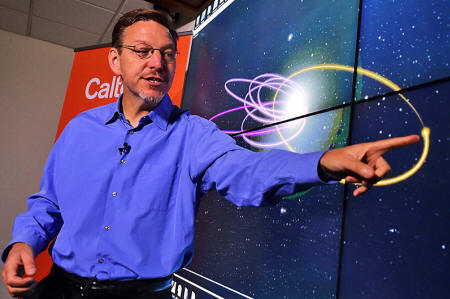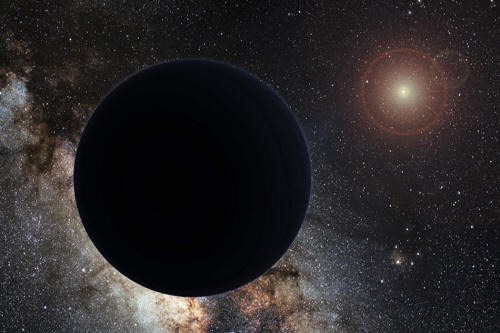|
from NewScientist Website
points out the 'Predicted Orbit', in yellow,
of the 9th Planet at
the Caltech Seismology Lab The search zone is growing smaller.
Astronomers have further constrained the likely whereabouts of Planet Nine (= ex-Planet X or 10 = Nibiru):
In January, Konstantin Batygin and Mike Brown, two planetary scientists at the California Institute of Technology, speculated on the existence of a ninth planet based on an odd alignment of six distant icy bodies.
Excitement rippled through the world of astronomers and many immediately joined the hunt.
A month later, Agnès Fienga at the Côte d'Azur Observatory in France and her colleagues found evidence that slight perturbations in Saturn's orbit as observed by the Cassini spacecraft could be better explained by the missing planet.
They were even able to suggest where Planet Nine might be along the most likely orbit proposed by Batygin and Brown.
Now Matthew Holman and Matthew Payne, two astronomers from the Harvard-Smithsonian Center for Astrophysics, have taken the idea a step further by analyzing the Cassini data for multiple possible orbits instead of just one (Observational Constraints on Planet Nine - Cassini Range Observations).
Stripes in the sky
They were able to confine Planet Nine's location to two stripes in the sky, which they then overlapped with Batygin and Brown's favored orbit to narrow the search further.
The latest data suggest that Planet Nine could be found towards the constellation Cetus, which is next door to Aries and Pisces, in a patch of sky that's just 20 degrees in radius.
That's a region thousands of times larger than the full moon, but still much smaller than the one given by Fienga.
By coincidence, this small zone is already being scoured by the Dark Energy Survey, a southern hemisphere project designed to probe the acceleration of the universe.
Gerdes was already planning to search Fienga's region, but a smaller region could mean a faster answer.
Although he never expected to be joining the hunt for Planet Nine, he's been pulled along by the excitement.
Reference
|



